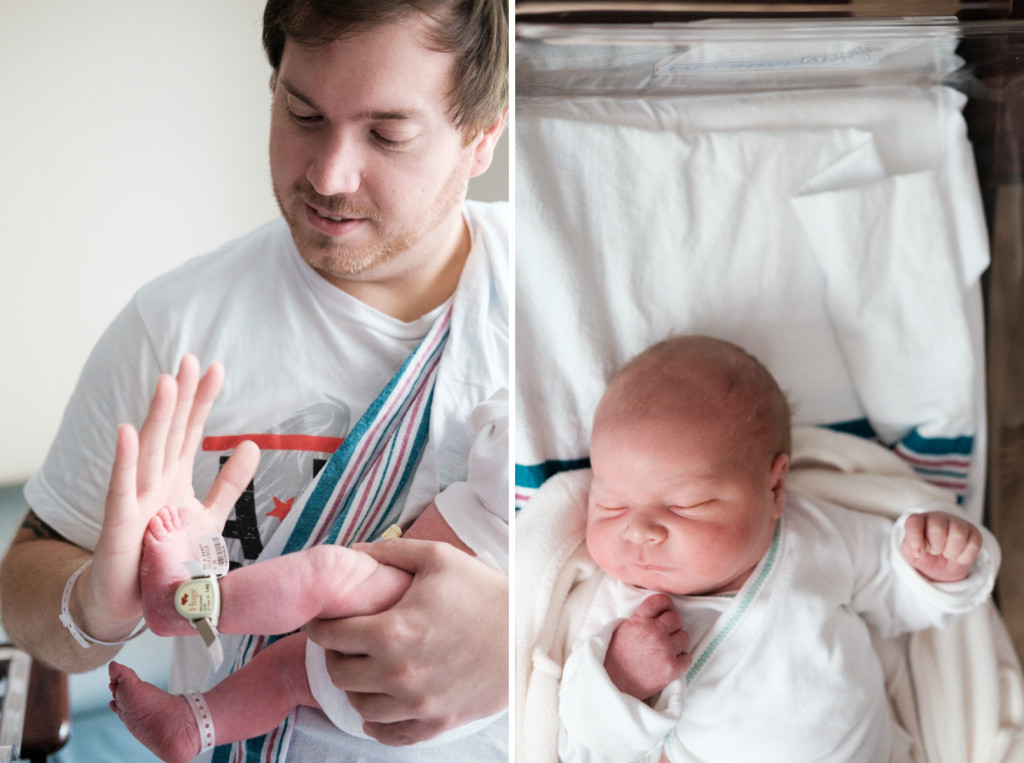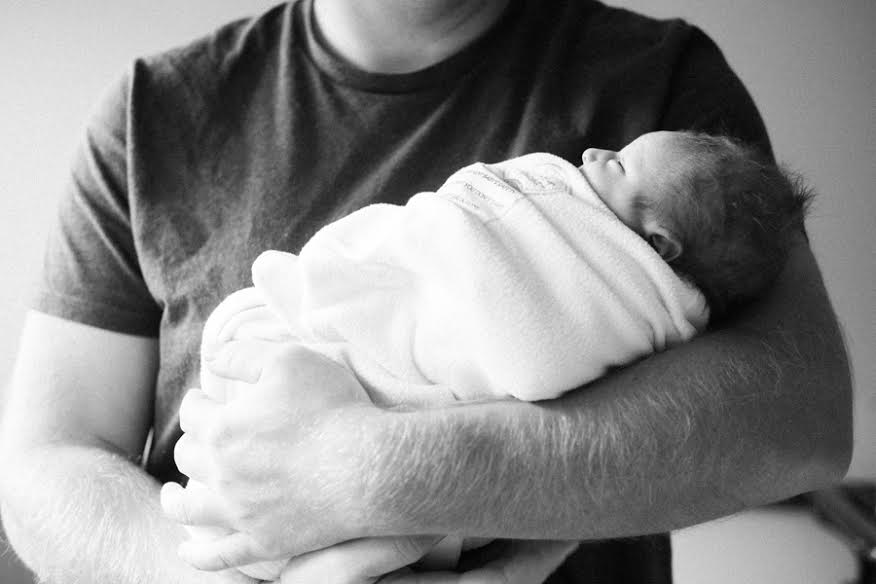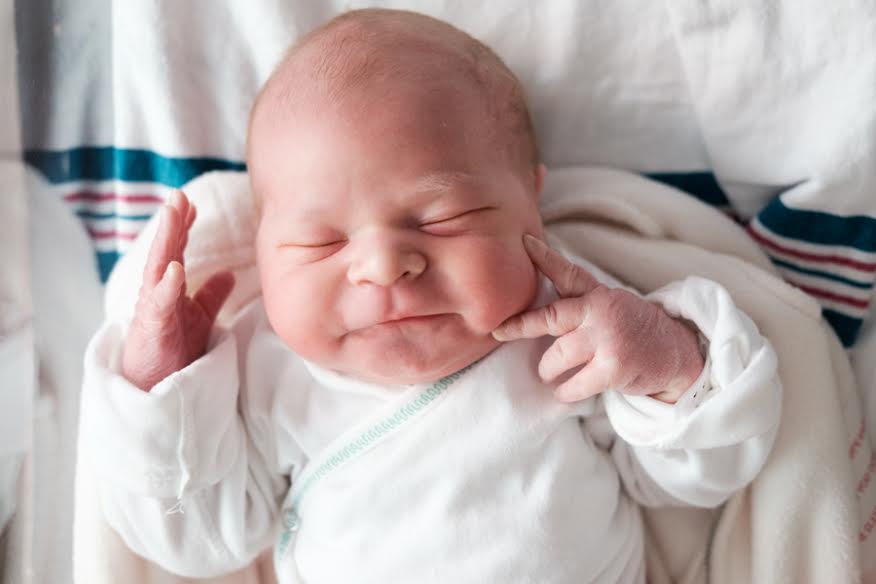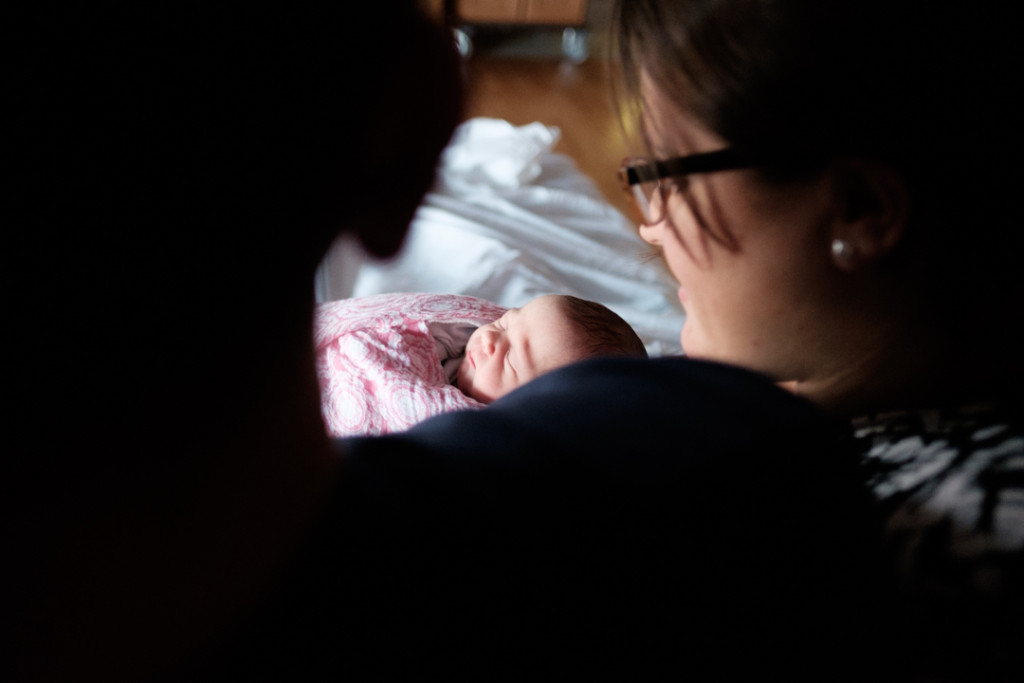
For 40 weeks there is the amazing growth and development of a new life inside a mother’s womb. Throughout this time there is anticipation of what the child will be like. Even with the advancements of imaging technologies, there is an incredible level of mystery about the newborn. Will he have a nose like his dad’s? A head of hair or completely bald? How big is she going to be? These are all questions that can only be answered when the baby finally arrives.
Photographing a newborn within the first 48 hours of life provides a beautiful and unique glimpse into the transformation of a family. There is an adjustment that is happening immediately after birth. It is a fleeting period of time, but it is foundational to the newborn, parents, and any siblings. A photography session at the hospital documenting this short window of time helps in the years ahead to remember the wonder of those earliest hours.

I am often asked by clients when the best time is to get in touch about a 48 hour newborn session. My view is it’s never to early to put photography on the radar. As my wife and I discovered delivering three of three kids two weeks early, “due dates” might provide an estimate of when a newborn will arrive but are certainly not a hard and fast rule. The earlier I know there is a baby on the way the more I can maintain flexibility with my schedule during that time frame. As the pregnancy progresses, I make a focused effort to check in with clients. Depending on the initial point of contact, I’ll set myself a reminder to send a note at the start of the third trimester, a week before the “due date”, and then if the baby hasn’t arrived yet, a short note celebrating the “due date”. Having even these brief points of contact help build confidence and comfort with the idea of having a photographer at the hospital right after birth.

Unlike a studio session, there are lots of elements that are difficult to account for when photographing newborns at the hospital. The light in the room might be unpredictable. Sometimes there are necessary interruptions from nurses and other hospital staff taking care of the health of the mom and baby. Sometimes there will be additional visitors for the family. Finding ways to respond to these unpredictable parts of a session comes with practice, a good deal of patience, and understanding what you can control.
The health and comfort of the baby and mom are paramount to every other component of a shoot. I make this abundantly clear not only to the parents, but also make a very concerted effort to communicate this with any hospital staff that may enter the room and need to care for the family. I step out or at least to the side and defer to the health professional’s care. For example, having the blue glow of a biliblanket might not be what anyone expected, but if it is what the baby needs it is important to decide with the client whether to make adjustments to the timing of the session or move forward with documenting this very real scenario.

Light is one of the most powerful parts of photography and I might not be able to have a lot of control over lighting in a hospital room, but I look for what I can control. Turning off overhead lights or opening a shade to let in natural light are small subtle decisions but will really influence the look of the photographs in the end. Certainly, you may bring a strobe to give you more light, but this might also alter the pacing and feel of the shoot for the newborn and parents. Sometimes that is a compromise worth making depending on your personal style and approach.
Hospital rooms can be physically confining with beds, chairs, tables, as well as the client’s personal belongs. The amount of movement in the room might be restricted. This challenge can result in not getting a shot exactly the way you want it or shooting slightly differently than expected. Still, I might have more control over where I stand than I do over the light in the room. Knowing this, I may decide to stand with the window at my back to get a nice soft light or I may face the window for a backlit look. Flexibility is key and making the best of restrictions should be the goal.
Coming with a plan of what shots you want to take also helps. This plan can be as simple as, baby alone, mom and baby, dad and baby, parents and baby. While it may seem formulaic and almost obvious to come in with a list as simple as this, you may be surprised how easy it is to miss a shot if you don’t plan for it at least in your head. How these shots come about might look different one session to the next, and there isn’t usually a need to force a shot, but providing even slight direction is helpful.

There is some need for discretion about just how long to spend with a family in the hospital. Remember the context of the shoot is generally a sleepless night after a labor or surgery in the case of a c-section. Certainly there is a particular element of excitement and adrenaline, but maintaining a sensitivity a new family’s personal space is something to consider. To be sure each case will be different, but I find it's best not to overstay a welcome.
Staying flexible and willing to work with a host of unpredictable parts are hallmarks of shooting newborn photography in the hospital during those first 48 hour of life. If you have the temperament and tolerance for this type of work, the reward will increase in value as the newborn grows into childhood.

Bio:
Thor Rasmussen is a photographer living with his wife and three (almost 4!) children in Saginaw, Michigan. His specialties include newborn, family, and wedding photography. In addition to his role as a photographer, he also works as a speech-language pathologist at a local hospital.
website: www.thorthought.com
Instagram: www.instagram.com/thortography
